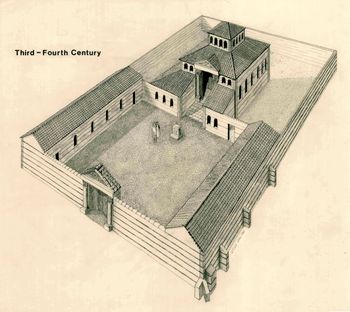Harlow Temple: Bartlett excavation archive
Maria Medlycott, 2016. https://doi.org/10.5284/1040799. How to cite using this DOI
Data copyright © Harlow Museum unless otherwise stated
This work is licensed under the ADS Terms of Use and Access.
Primary contact
Harlow Museum
Muskham Road
Harlow
CM20 2LF
UK
Tel: 07958663458
Resource identifiers
- ADS Collection: 2418
- DOI:https://doi.org/10.5284/1040799
- How to cite using this DOI
Introduction

The project involved the digitisation of the paper archive from Richard Bartlett’s major 1980s excavations at Harlow Roman Temple. The archive comprises context sheets, photos, finds-drawings, plans and specialist reports.
The Roman Temple at Harlow is of national significance, and the archaeology from the various phases of excavation on the site has attracted research interest at an international level. However the 1980s excavations by Richard Bartlett have not been published, in part due to his premature death. The results of the excavations place it in context with other major long-term religious complexes, such as those at Great Chesterford, Essex and Marcham, Oxfordshire.
By making the written archive publically available, the site's research potential is now more readily accessible, both for research purposes and for the local archaeological community. The project consolidates over 15 years of work by the Harlow Museum volunteers, in conserving the archive. It was initiated and overseen by Anwen Cooper as a spin-off from the ERC-funded English Landscape and Identities project (University of Oxford). Maria Medlycott (Place Services, Essex County Council) directly managed the digitisation programme and produced the archive report. The work was funded by grants from the Essex Heritage Trust and the Essex Society for Archaeology and History. Additional support was provided by Jon O’Connor and Ann Olsznack (Science Alive, Harlow), volunteers from Harlow Museum and Stan Newens (former MP and MEP for Harlow).




